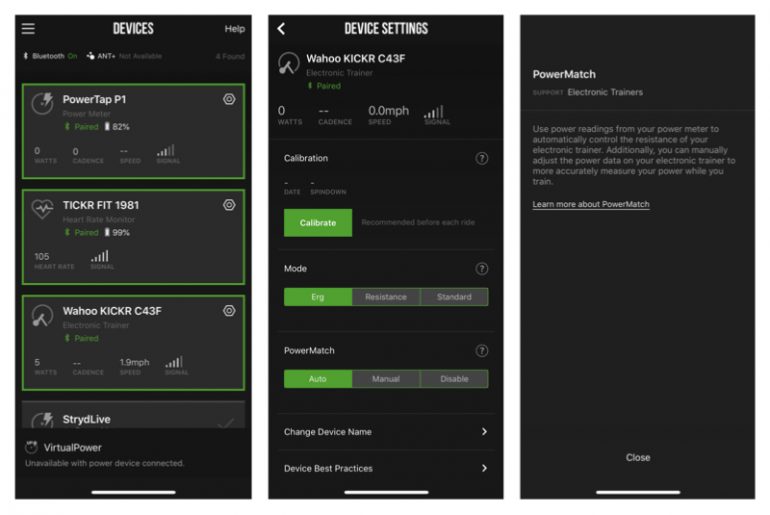
So, switching off ERG mode every now and again, if you use it often, might be a good call if you’ve got a long indoor session to get through.

While it’s great to be able to ride a workout without too much thinking involved, sometimes the focus needed in continually adjusting your own resistance and cadence to meet your power targets can add interest to a session. These include the ability to gauge your effort level and determine appropriate pacing, controlling your power output through appropriate gear selection and cadence, and having the mental fortitude to push hard entirely of your own volition. Riding too often in ERG mode can also limit development of skills that are important in the real world. Some apps, including Zwift, allow you to adjust the difficulty of an interval session during the workout. This means on some days your power targets in your workout might be a little too high, and on others they might be a little too low. However, FTP changes from day to day, depending on factors such as fatigue, sleep, nutrition, hydration and so on. One major drawback of ERG mode is that it’s based on a fixed percentage of FTP. Drawbacks of ERG modeĮRG mode is great for targeting specific training zones, but isn’t necessarily reflective of real-world riding. While people tend to use ERG mode mostly for interval training, another important benefit it offers is keeping riders ‘reigned in’ during lower-intensity rides, including base training, where there can be a tendency to go harder than is necessary to stimulate the desired adaptations. You can use ERG mode in conjunction with your training zones to set the precise output for a particular workout (training apps will do this for you), helping you get the most out of a short training session – one of the key benefits of indoor cycling.

Think of it like an automated training companion, keeping you pushing right up to the last second.īy fixing your power to hit a pre-determined output, both during an interval and recovery, ERG mode also allows you to target specific training adaptations, whether you’re working on your VO2 max or improving your sprinting. Second, ERG mode can help you hang on over the last few seconds of an interval, where you may ordinarily have given up. ERG mode prevents this by fixing the power in the correct range. There’s often a temptation to go harder than planned over the first few intervals, which might mean you can’t complete the last few. The only thing you really need to focus on is keeping your cadence in a comfortable range, and not varying this too much.ĮRG mode is particularly appealing for interval workouts, and for good reason.įirst, using ERG mode is helpful for people who struggle to pace their efforts and regulate their power.

One of the big advantages of ERG mode is that you don’t need to think (much) about your workout, which can be helpful if you’re riding at the end of a tiring day. Benefits of ERG modeĮRG mode automatically controls the resistance of your smart trainer to match your cadence, in order to achieve a specific power output. However, the latest indoor cycling apps offer a wide range of workouts and training plans, and also allow you to build your own.

Perhaps not surprisingly, ERG mode only works with pre-built workouts because it requires a target power to be defined, otherwise the trainer wouldn’t know how much resistance to apply. This is in contrast with other trainer modes, where the onus is on you to adjust your resistance and cadence in order to hit your target power. ERG mode uses the two in tandem to ensure you hit the prescribed power output.Īs an example, if a workout requires you to hold 200 watts, the resistance will automatically increase if your cadence drops, or decrease if your cadence increases, in order to keep you at 200 watts. Power is a calculation of torque (how hard you’re pressing on the pedals) multiplied by cadence (how fast they are turning). Simon Bromley / Immediate MediaĮRG mode is a setting in training platforms such as Zwift, TrainerRoad and Wahoo SYSTM that fixes your power output by automatically adjusting your resistance to match your cadence. ERG mode is one of the key features of smart trainers, which can communicate wirelessly to computer programs and apps.


 0 kommentar(er)
0 kommentar(er)
